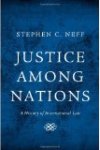
Reviewed by: James G. Apple, Editor-in-Chief, International
Judicial Monitor and President, International Judicial Academy
In the first one and a half decades of the 21st Century international law has not been a subject of interest in the United
States or elsewhere in the world among the general populace or even in more
sophisticated circles populated by judges, lawyers, political scientists and
politicians. In some countries the subject of international law is probably viewed with complete
disinterest. The reason for such a state of affairs can probably be attributed in a part to a
lack of knowledge about the subject. It is not on the radar screen of many
countries which is either the cause or one of the major reasons for the lack of
enthusiasm for the subject.
If one is desirous of promoting a knowledge of international
law either as a self serving project or to educate those who should be
familiar with the subject, the question arises: how best can international law
be promoted? How can international law inspire those who need to know about it
and its principles. In other words how can one attain a knowledge,
understanding and appreciation of international law? In the search for an
answer to that question, to gain enlightenment about international law, the
answer may lie in becoming familiar with the history of it.
One of the ways, a major way in fact, of gaining knowledge
about a subject, a way to enlightenment about that subject, is the study of the
history of the subject. This particular method is recognized in law – in fact it is
one of the “methods” of the judicial process identified by the late Associate
Justice of the Supreme Court and former Chief Judge of the New York Court of
Appeals, Benjamin Nathan Cardozo. Justice Cardozo, in 1921, gave a series of
four lectures at the Yale Law School which made up the content of a book he
authored titled The Nature of the Judicial Process. In this small legal
literary gem he identified “the method of history” as one of the methods that a judge may employ to resolve the dispute in a case.
Likewise one way to establish or revive an interest in
international law is to study its history. The only problem with that approach
is that until recently, there have been not very many books or commentaries
that have dealt with that subject. Stephen Neff’s new book, Justice Among
Nations, goes a long way in resolving that issue.
Readers of this volume may be surprised to learn that
international law, contrary to contemporary belief, , is not new, or even
relatively new – those terms being used in the sense that its beginnings were
long before the period of European Enlightenment in the 18th and 19th Centuries. The seeds of international law were planted in China – “glimmers of
international law can be discerned nearly as far back as historical records
will take us.” But Neff cautions in Part 1 (“Law and Morality Abroad”) that:
The international law in question was, to be
sure, threadbare in the extreme by our more demanding later standards.
It was an assemblage of practices and not an expression of any deep
seated general principles. In particular, three areas of state practice
were especially prominent. First was treaty making. There was a very
general concern and expectation that treaties, once solemnly concluded, must be
scrupulously adhered to. Second was diplomatic relations – especially the
according of certain privileges and immunities to envoys dispatched
on official missions from foreign powers. Third was warfare. There was a
general, if somewhat vague, belief that war should only be undertaken
only if there is a just cause for them. And in certain contexts at
least, there were sometimes rules-or at least expectations- that certain
restraints on violence would be observed.
In identifying treating-making as the first indices of what
has become international law, Neff point to a situation that developed in the
21st Century B.C., being a treaty of friendship between two “states”
in what is now parts of Syria and Iraq. The treaty was primarily concerned with
the safety of messengers and merchants traveling between the two states. [It is
ironical that the distant origins of international law occurred in an area that
is now consumed with war and fierce fighting in the aftermath of two wars.]
Neff follows up this revelation with mention of a more
promising period for the development of “a set of broad principles about relations
between states,” rather than “singly providing a menu of practices of specific
types.” The author establishes “the birth of our subject in ancient China, in
the age prior to the unification of the country into a single empire in 221
B.C” (the period called the Spring and Autumn Era 722-481 B.C.) – over 140
treaties were recorded during this period in the Spring and Autumn Annals.
From China Neff deftly traces activities suggestive of
international law to ancient Greece, imperial Rome, to India and then back to
the origins of “natural law” in Greece and the ius gentium [law of the
people] of imperial Rome. He states that:
It was Rome, more than any other ancient
society, that bequeathed a set of ideas that would later metamorphose
into international law in the later sense of that term. To some
extent their thinking was borrowed (as usual) from the Greeks.

 International
Judicial Monitor
International
Judicial Monitor